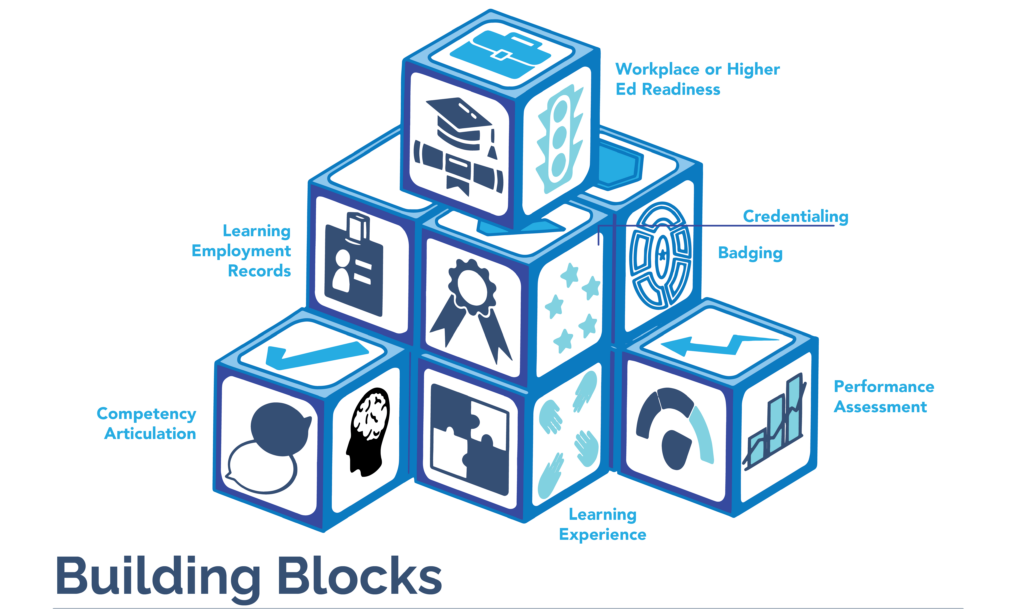Key Takeaways
- Credentialing is a solution to support more effective and efficient learning journeys towards family-sustaining wages.
- Credentialing is a two-sided market with value and interoperability challenges.
- Technology, in the form of Learning and Employment Records (stored in Digital Wallets), can accelerate the credential movement.
Vision
Imagine a comprehensive set of credentials in a community or region that supports pathways to family-sustaining-wage occupations. This could be done through the creation of a coherent single set of competencies connected to credentials that satisfy secondary education graduation requirements, connect to industry-recognized credentials, and cover core, technical, and transferable skills. When the possibility of credentialed learning is reached, every learner in a region will have a Learning and Employment Record that accurately and dynamically describes skill sets, competencies, and credentials.
Overview
When a learner completes a program of study, they receive credentials. These credentials validate that the learner has demonstrated proficiency in all the recognized skills. A high school diploma and numerous industry certifications are credentials that often play a gatekeeping role for employment.
Credentials are well-established in the Career and Technical Education (CTE) ecosystem of secondary education and within employment sectors requiring specific technical skills. Most CTE programs emphasize technical skills rather than core or transferable skills. Although transferable skills (such as communication, collaboration, leadership, and project management) are rarely evaluated, many recognize them as increasingly important for the workplace. Programs continue to define core skills (like mathematics and literacy) through a list of courses and grades and to assess these via standards through national assessments. These measurements of core skills tend to be weak signals for long-term success. While over a million different credentials are available for learners from high school through employment, many are at a grain size that serves only as a proxy for skill assertion rather than the assertion itself.
Often embedded within CTE programs, pathways to credentialing include academy programs, internships, apprenticeship models, and whole-school models that incorporate some element of work-based learning—where students earn high school credit while embedded in the workplace.
While there is a high level of interest in work-based learning, participation is low due to the complexity of implementation. Work-based learning is a particularly good way for students to develop a sense of purpose/vocational direction and authentically build both technical and transferable skills. Since work-based learning falls outside of traditional forms of measurement, it provides an opportunity for credentialing.
Additional work-based learning opportunities occur in postsecondary settings with certification programs in the community college system and internships in four-year degree programs. Throughout a career, certifications are available in some sectors for employees to continue learning and growing.
Despite the credentialing success of the CTE programs and the availability of credentials, the challenge remains around how to describe valuable (value-creating) capabilities around core, technical, and transferable competencies that are helpful to every learner and meaningful to higher education and the workforce.








